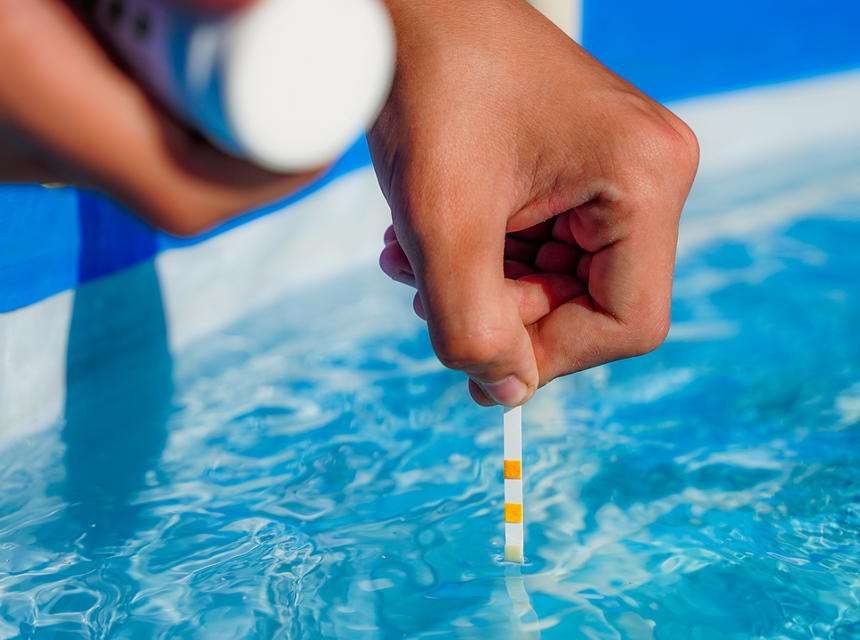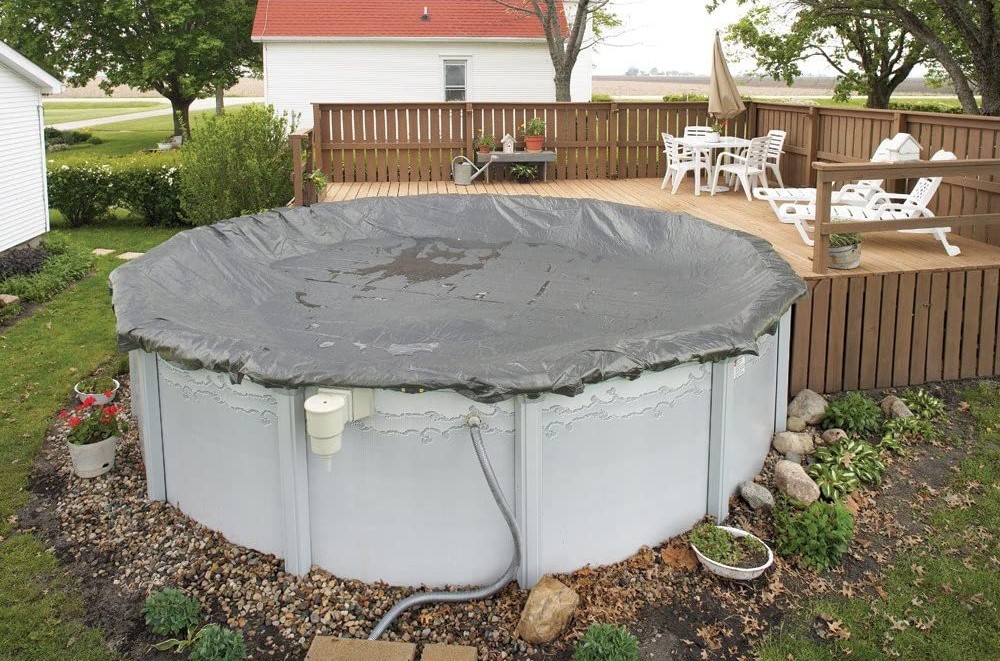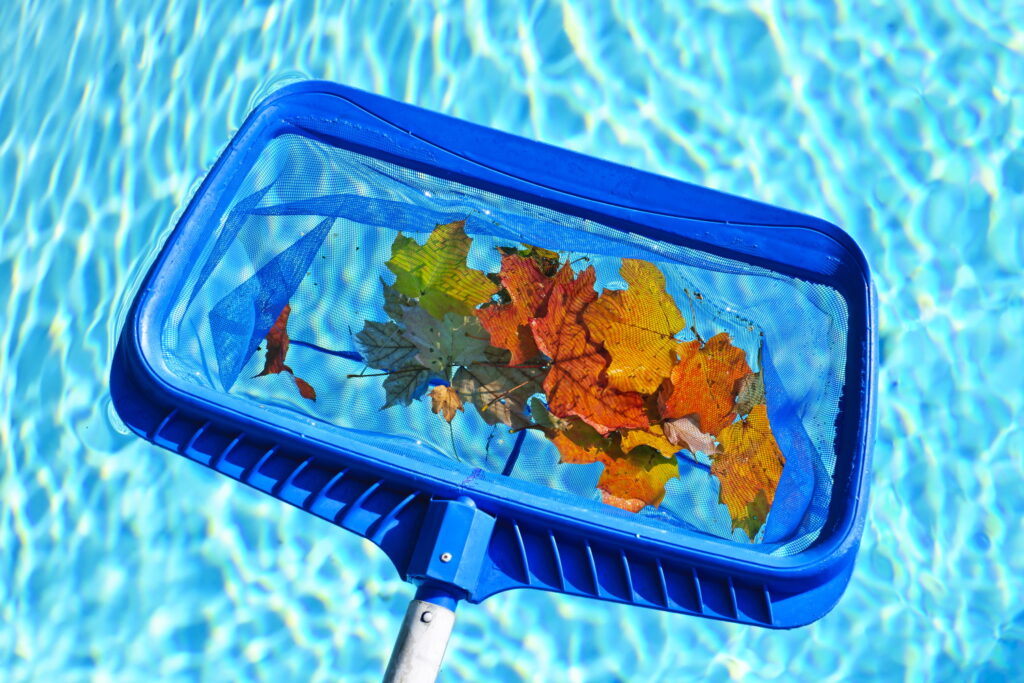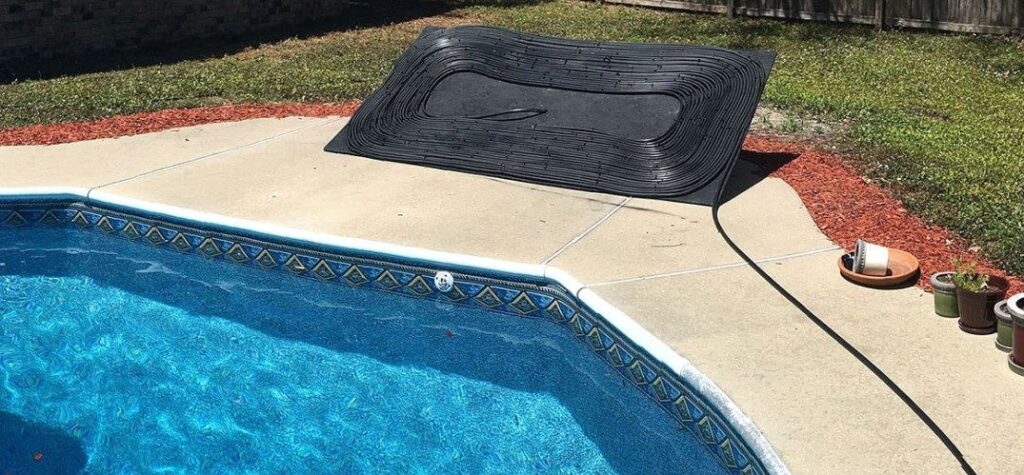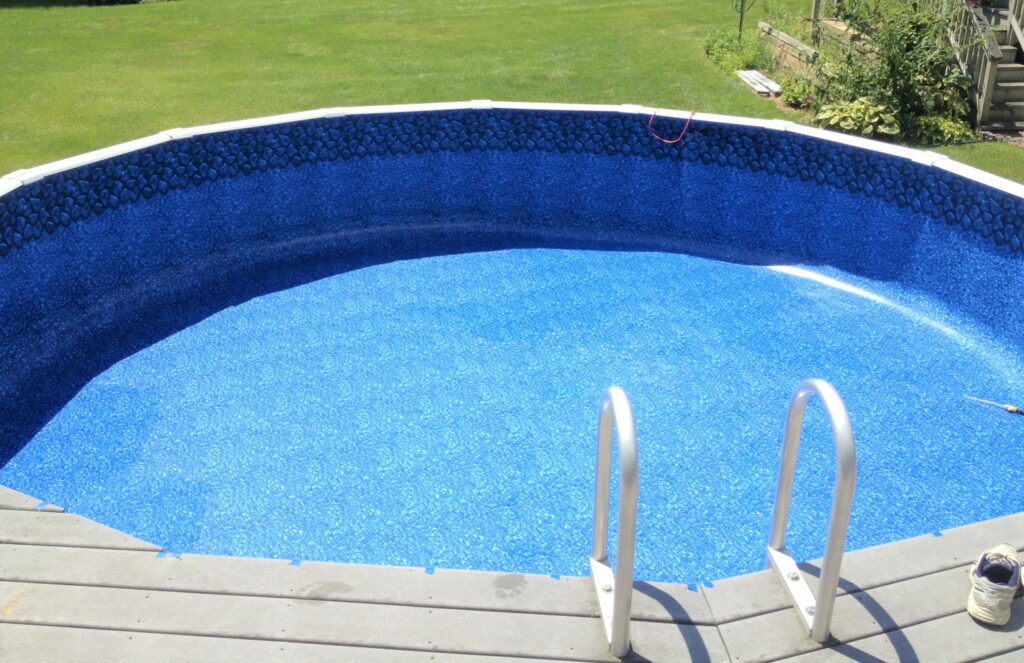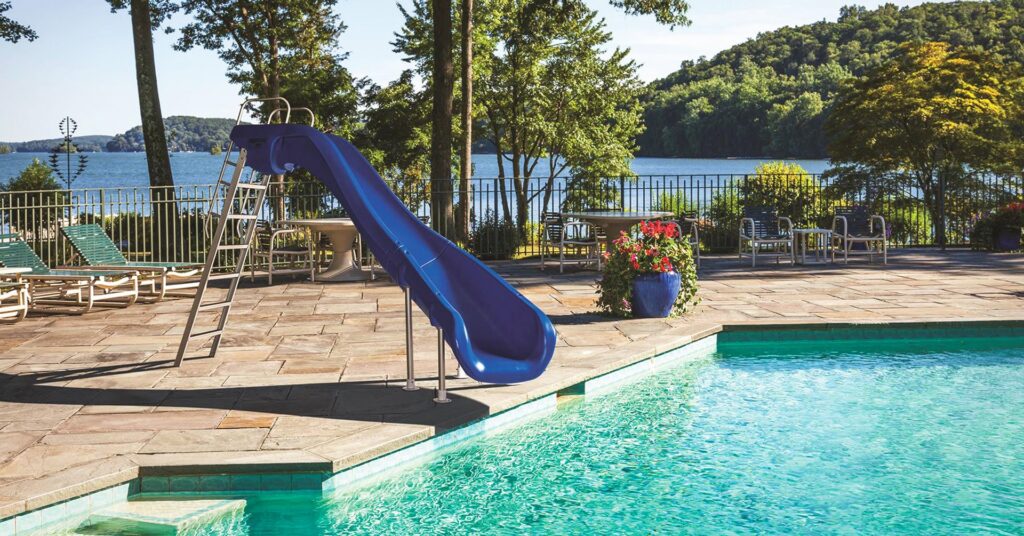We all line up for extra chores when summer draws to a close. As a pool owner, preparing your pool for the cold winter season is one of the seasonal transitioning chores. Winterizing the pool prevents damage and contamination from winter weather elements like snow and frozen water. It also makes pool opening in Spring a breeze. As a first-time pool owner, you may not know how to winterize an above-ground pool. This article has a detailed step-by-step guide to help you do it correctly.
Winterizing a pool involves balancing the water chemistry, shocking the pool, cleaning it, removing all accessories, lowering the pool water level, and draining the pipes and equipment before covering it. Lubricating the O-rings and metal parts of the pool equipment is also essential for maintaining longevity. Read on for more pool winterizing pro tips.
If you live in an area that experiences harsh winters with frost, snow, and extreme cold, winterizing your pool is essential to keeping it in good working condition. During the summer, your pool stays open throughout, and it is prone to contamination by leaves, branches, dust, and debris, but it is no big deal because you do regular maintenance.
On the other hand, during winter, no one uses your pool; thus, it is senseless to carry out maintenance practices regularly. According to an article by Rome News Tribune Trusted Source Flipper Pools warns of importance of closing pools for fall | | northwestgeorgianews.com According to Scott Hood, owner of Flipper Pools & Patio, located on Curtis Parkway in Calhoun, it’s important to start thinking about winterizing your swimming pool as the weather begin www.northwestgeorgianews.com , if you do not winterize your pool, you may have a difficult time when you need to use it in the warmer season. Besides cleaning it, you may be forced to rebalance the water and probably repair freeze damage. Winterizing your pool goes a long way in reducing the risk of contamination, and cold damage to the sensitive parts, thus saving you money and time.
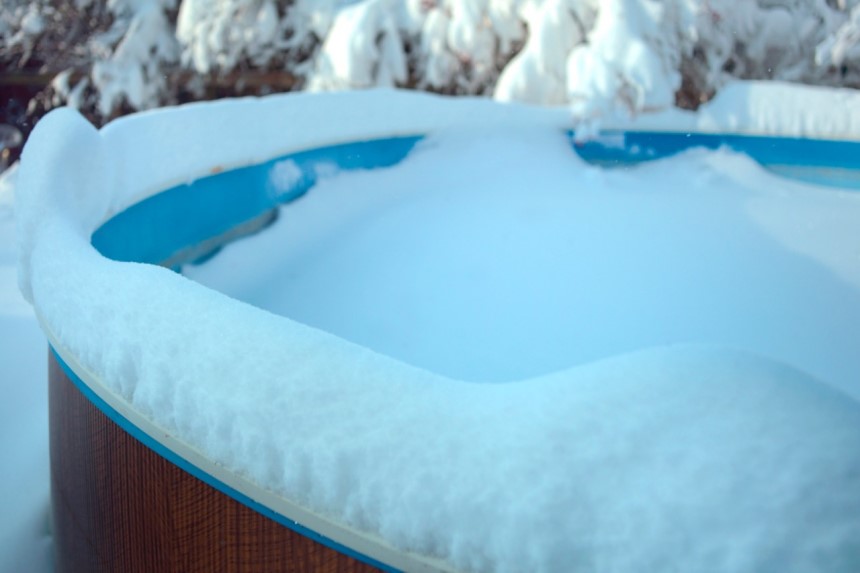
Pool closing times vary depending on geography. According to an article by Forbes Trusted Source Ask The Contractor: Things to Know About Winterizing Your Above Ground Pool – Forbes Home If you're curious about winterizing your above ground pool, our resident contractor will answer the six most popular questions. www.forbes.com , the rule of thumb is to close the pool when temperatures drop below 65 degrees F (18 degrees C). Your pool water will be free of algae and orchid infestation at such low temperatures. Furthermore, leaving the pool open longer allows you to clean, test and balance the water chemistry properly before closing.
Before you begin a pool winterizing process, ensure you have the necessary supplies for the job. Here is a list of the essentials. The list seems long, but don’t beat yourself up. Depending on where you live, you don’t have to buy all the items on the list.
· pH decreaser and increaser
· Alkalinity increaser
· Chlorine
· Calcium hardness increaser
· Cyanuric acid
· Algaecide
· Metal sequestrant
· Pool shock
· Pool Vacuum
· Pool brush
· Algae brush
· Leaf skimmer
· Pool antifreeze
· Rubber plugs and gizmos
· Air compressor
Here is how to easily close your pool for long periods of freezing conditions;
When preparing to close your pool, the first thing to do is to balance its water chemistry about one week before you are ready to close. To manage the water’s phosphate levels, pool magic and PHOSfree directly to the pool when the pump is running. Read and follow the manufacturer’s instructions for the correct application.
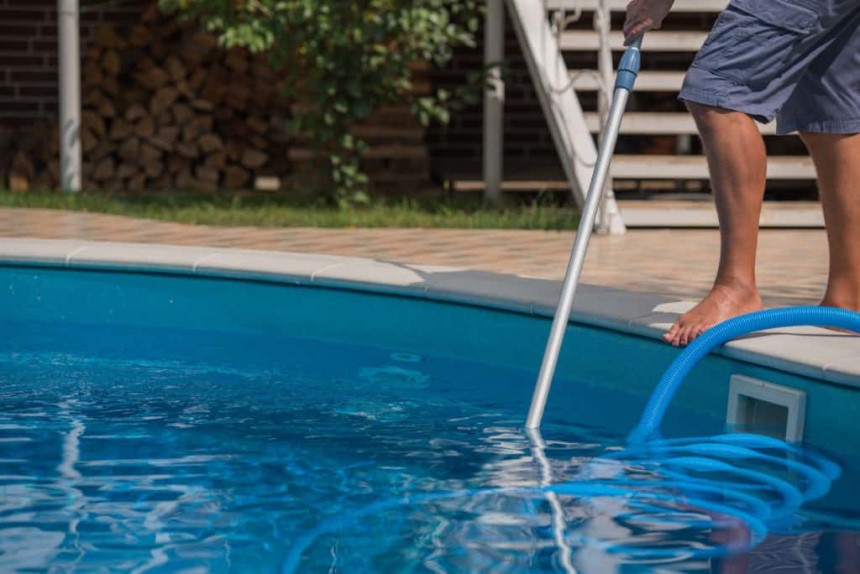
Before closing the pool, you must ensure it is sparkling clean and free of contaminants. You will need the best skimmer to remove all the leaves and debris floating on the water. Use a brush to remove debris stuck on the pool floor. You have to remove as much debris as possible with the brush to prevent staining and any impending algae spores. You may need to use specialized algae brush to target algae spores. Also, be sure to use a soft brush to avoid damaging your pool’s lining. You can use a pool vacuum or invest in the best suction pool cleaner like the popular Zodiac Baracuda G3 kit to remove all the remaining dirt and debris from the pool floor.
Add anti-stains and scaling products to the pool water to prevent unsightly stains from forming over the winter period. From your pool closing kit, get the stain and scale pill and add it to the pool according to the application instructions.
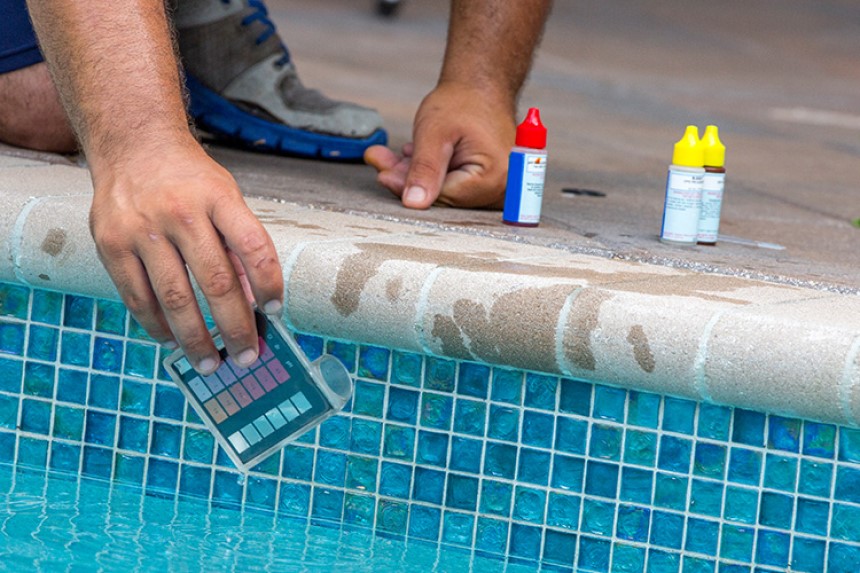
Testing and balancing the pool water are crucial steps in winterizing a pool. Testing the water will let you know its pH levels, total alkalinity, free chlorine, total chlorine, cyanuric acid, and Calcium hardness so you can make necessary adjustments. Your normal pool testing kit should be able to do the job. The ideal total alkalinity levels should be between 80 and 120 parts per million (ppm). The calcium hardness should be between 180 and 220 ppm and the pH levels between 7.2 and 7.6.
The ideal total alkalinity levels will vary according to the type of pool shock used. For instance, if you use Dichlor, trichlor, or bromane, the total alkalinity levels should be between 100 and 120 ppm. For others like Sodium hypochlorite, Calcium hypochlorite, and Lithium hypochlorite, the ideal total alkalinity levels are anything between 80 and 100 ppm.
Further, the free chlorine levels should be 3 ppm and total chlorine less than 0.7 ppm. To balance the water chemistry, you have to add chemicals until you achieve all the ideal ranges. You can do this at least one day before winterizing and closing the pool for better results.
For a breezy pool opening in Spring, ensure you use the best algae prevention products when winterizing the pool. Follow the application instructions keenly then wait at least an hour before proceeding to the next step.
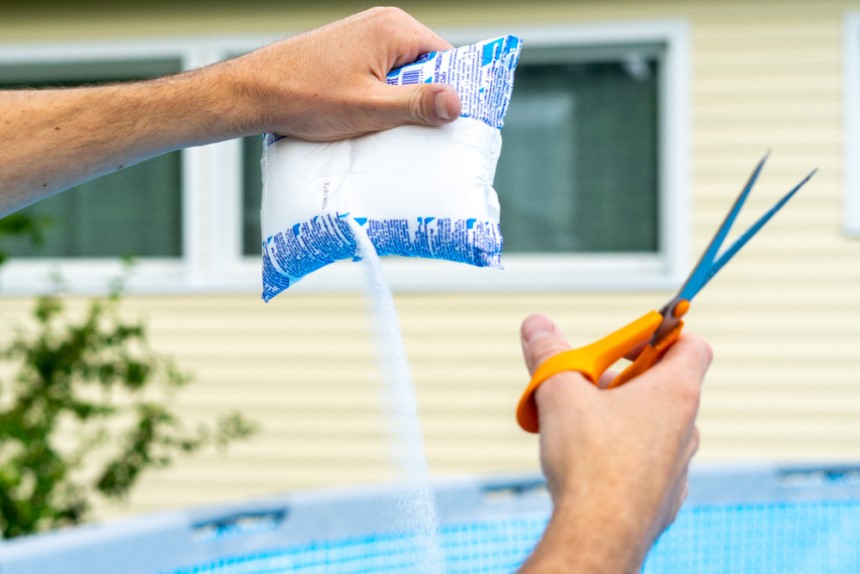
Shocking is the next crucial step after balancing your pool water chemistry. You can use either granular chlorine or non-chlorine pool shock. A non-chlorine shock is more suitable if your pool’s chlorine levels are high or normal. It is also great for saltwater pools. Apply the non-chlorine shock to the pool as directed by the manufacturer. Most brands recommend 1 lb for every 10,000 gallons. This means you would have to calculate the amount of water in your pool before applying the shock.
You need a chlorine-based shock to raise your pool’s chlorine level to the appropriate range of 2.0 to 4.0 ppm. As with a non-chlorine shock, apply the chlorine shock according to the manufacturer’s instructions. Leave the pump on for water to circulate, then wait at least eight hours before proceeding to the next step. Here is more on how to chlorinate a pool to breakpoint by the Indiana State Department of Health. Trusted Source www.in.gov
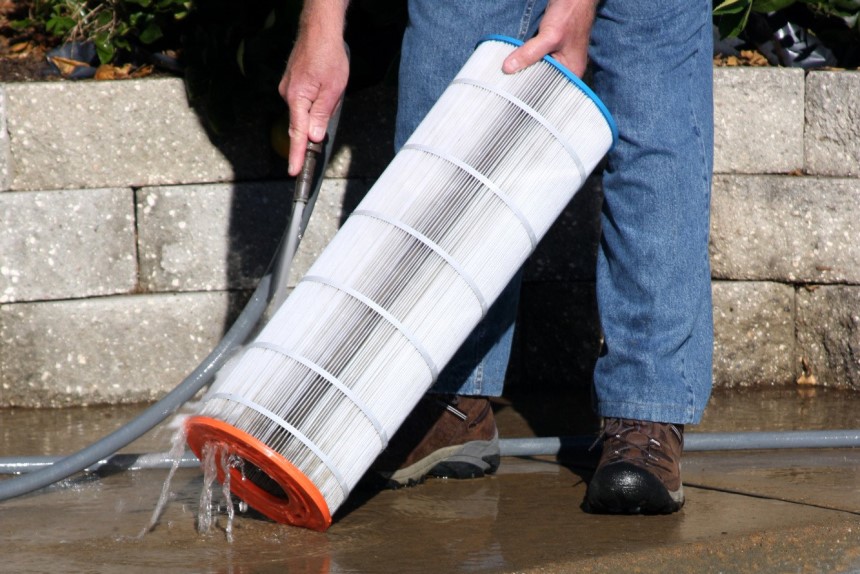
Eight hours after shocking your pool and raising its chlorine levels, it is time to clean the filter. If your pool has a cartridge filter, remove it and give it a manual thorough cleaning. If it is sand or DE filter, give it a quick backwash.
A winter pill is a winter pool closing chemical that contains slow-release water sanitizers and clarifiers for keeping pool water clear and cloud-free for the entire cold period. Most pool closing kits come with a winter pill, but you can easily purchase it from third-party vendors if you didn’t opt for a pool closing kit. As with all the other pool chemicals, follow the manufacturer’s instructions on how to open the pill and add it to the water.
Winterizing your pool technically means you are not using your pool again until next year. Therefore, it would be senseless to leave power on. Switch off the breaker on the pool’s primary source of power and remove the ‘On/Off trippers from the time clock. Turning off the power will prevent the pump from turning on when working on the next winterization steps.
The inlet fitting, also known as directional or eyeball fitting is located on the pool’s inside wall about 6 to 12 inches below the waterline. Remove it, then insert a winterizing plug into the opening.
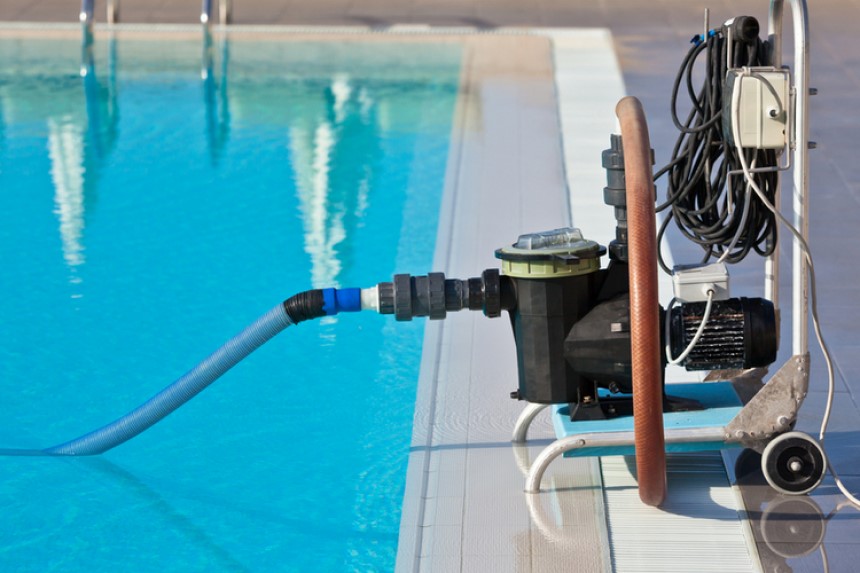
You need to protect your pool skimmer from freezing damage during winter. If you use a winter skimmer cover plate to protect the skimmer during winter, you wouldn’t need to drain the water level. The winter skimmer cover prevents pool water from entering the skimmer, thus protecting it from cracking when the water freezes.
If you don’t have a winter cover skimmer plate, you will have to lower your pool’s water level. Lower the water level until it is slightly below the skimmer (4 to 6 inches) and where water jets into the pool. You can use a submersible pump to drain the water or simply siphon it out with a garden hose. Do not drain the water below the recommended level as you would risk damaging your pool’s vinyl liner.
Alternatively, you can get a winter pool gizmo to protect your pool skimmer. A gizmo is a piece of hollow plastic that you can screw into the bottom of your skimmer box. During winter, the gizmo compresses when the water freezes and expands to prevent the skimmer from cracking.
Remove all the drain plugs from the pool equipment, including; the filter tank, pump volute, heater, and the pump strainer basket housing. Keep the plugs safe as you need them next swimming season. Disconnect all the filter hoses from the pool return ad skimmer fittings. If you use an automatic chlorine feeder, drain it.
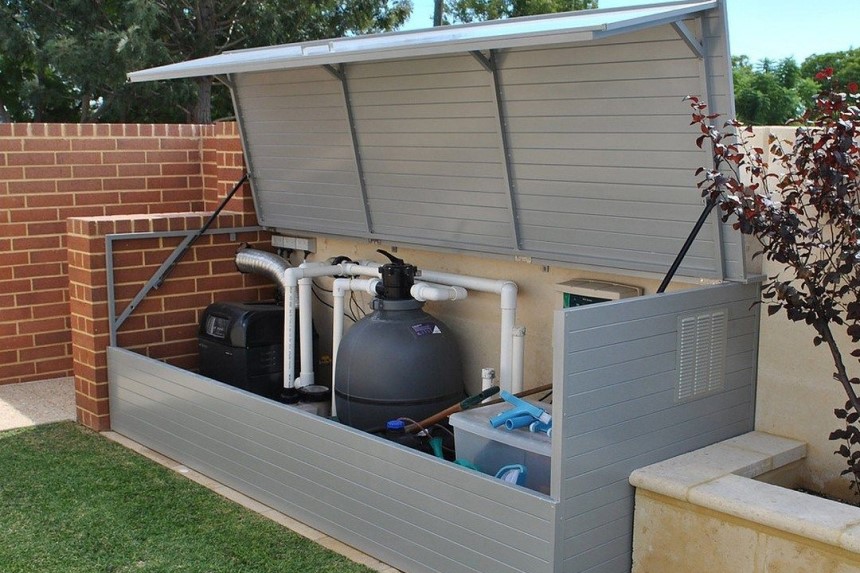
Once you have removed all the sensitive pool equipment, move them to a safe non-freezing location. A basement or heated garage are prime options. Put all the drain plugs in the pump strainer basket for safety. If you have no storage space, you can leave the equipment outside, but you have to winterize them. For instance, if your pool’s filter has a multiport valve, you can set it to winter or winterize option to prevent freezing damage.
Ensure all non-permanent things like automatic pool cleaners, ladders, hoses, pool floats, and toys are out of the pool before closing. Drain them off completely then store them in a safe non-freezing location.
If you have an average size above-ground pool of about 24 inches, then you probably have two air pillows. If your pool is smaller, it is highly likely that you have one air pillow. Inflate the air pillows and tie them to a stationary object. If you have multiple air pillows, use the grommets on the pillow’s corners to tie them to a stationary object.
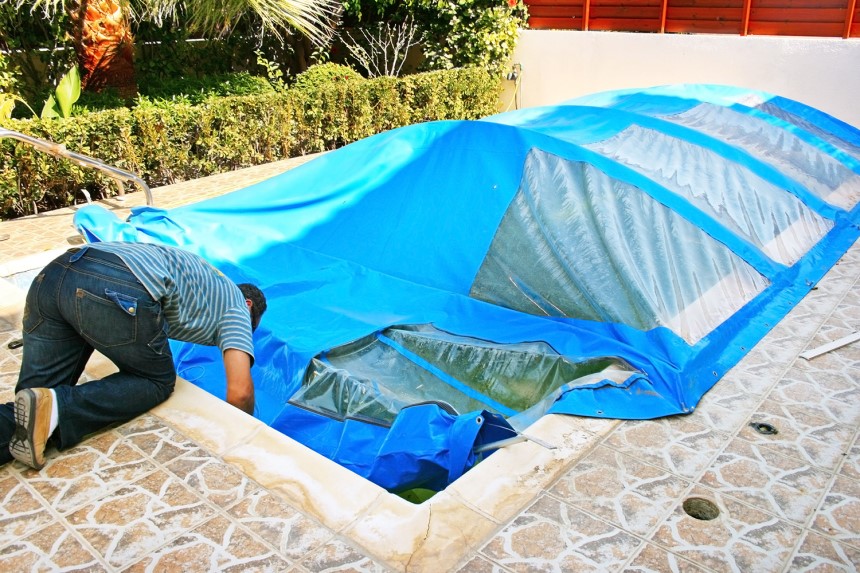
The final winterizing step is covering the pool. Get a tight-fitting winter pool cover suitable for your pool size and cover the pool to prevent debris, leaves, and other environmental elements from entering the pool during winter. Secure the pool cover with the cable and winch assembly included in its package. You can also get wall bags, winter cover wrap, and cover clips to secure the pool cover further and prevent it from wind damage. If you leave in an area with plenty of trees, you can add a leaf net on top of the cover for easier removal of leaves.
As mentioned earlier, the winterizing process varies depending on the winter conditions in different geographical areas. If you live in an area that doesn’t experience below-freezing temperatures, you can use the steps above to close the pool. However, you would have to make slight variations like;
· Steps 10 to 14 won’t be necessary, so skip them all.
· Fill up the pool to the top instead of lowering its water level.
· You don’t have to remove non-permanent fixtures unless they interfere with the pool cover placement. Most pool ladders are usually an obstacle when covering up the pool.
· During winter, set your pool to run the pump for at least two to four hours daily to keep the water circulating. If the weather forecast shows the possibility of freezing, continue running the pump until the freezing damage risk passes. You can invest in a freeze sensor to reduce the risk of freezing damage.
You don’t have to close the pool if you don’t get below-freezing temperatures in your area. However, this would mean you have to do basic winter pool maintenance. You have to inspect the pool cover visually at least once every month to ensure the water levels are okay and there are no damages. Also, check for free available chlorine in the water. If the water is frozen, do not break the ice to do the test. You may damage the pool.
Winterizing your pool filter is key to keeping it safe from freezing and potential expansion damage. Here is how to winterize different types of pool filters;
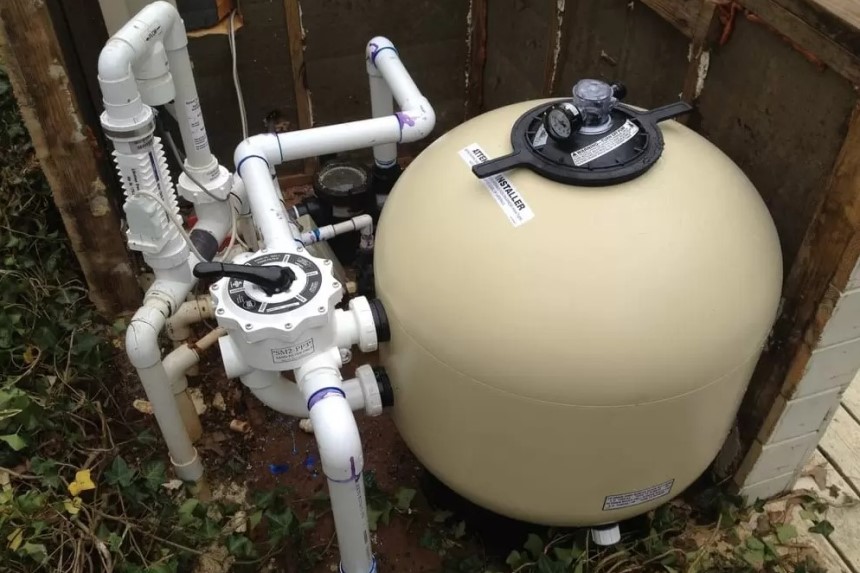
If your pool uses a sand filter, set up the valve on the ‘Winterize’ setting, then remove the drain plug and allow the filter to drain completely. If the filter valve does not feature the ‘Winterize’ setting, backwash it for 2 to 3 minutes until the water runs clear, then set the filter back to the ‘Filter’ setting.
If the sand filter’s multiport valve features a sight glass and bleeder valve, remove them and store them well in the pump basket for next season’s use. You can leave the sand filter outside, especially if you find it too heavy as long as you remove all the plugs to prevent freezing water or condensation from building up inside it and cracking it up. If you find the weight manageable, bring the sand filter indoors in a dry place.
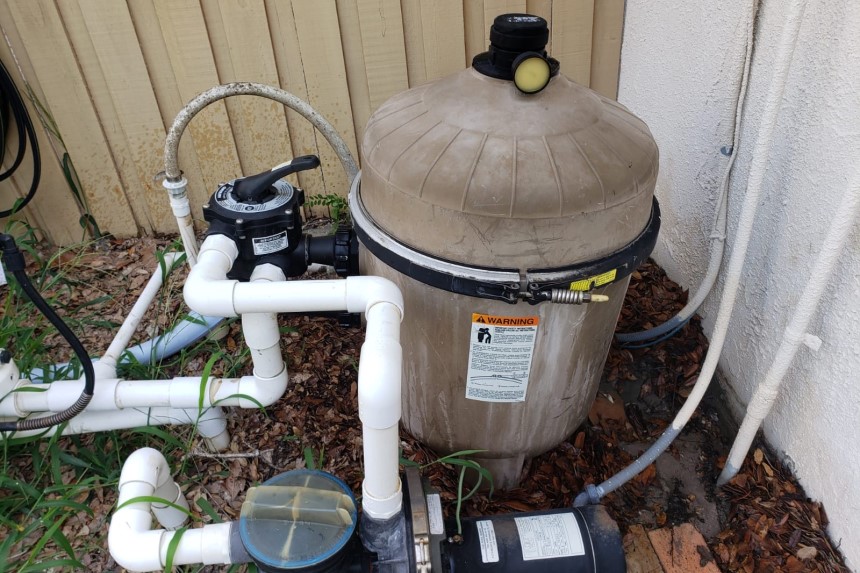
DE is an abbreviation for Diatomaceous earth. Drain the DE filter, then rinse off its grid, also known as fingers, with a hose to remove the excess diatomaceous earth. Make sure you leave the valves open.
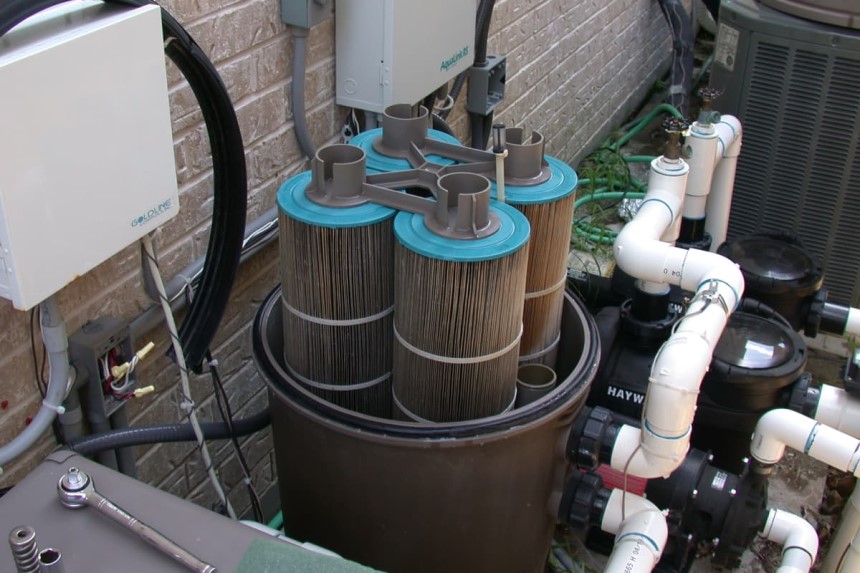
This is just as simple as winterizing a DE filter. All you have to do is drain the cartridge filter, rinse it off with a hose, leave the valves open then bring it indoors or at a winter-free area for storage.
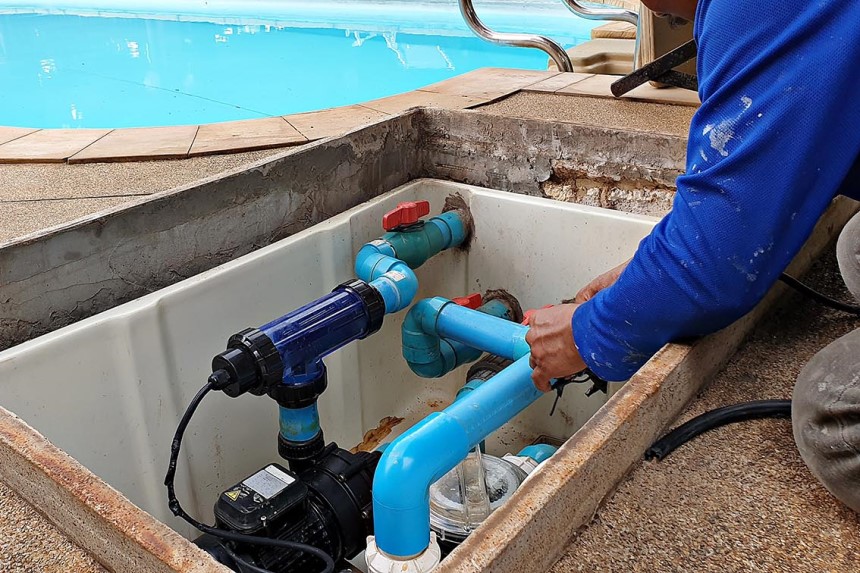
As with other sensitive pool parts, you have to winterize your pool’s pump for it to be in great working condition next swimming season. Winterizing a pool pump mostly involves draining it. Open the strainer cover on the pool pump, then remove the drain plugs. Different models have different settings, but the process is pretty straightforward.
Run the pump for a few seconds to remove all water from the impeller. If you run it longer than just a few seconds, you will risk burning out the seals. If your pool has flexible detachable pool filter lines in its plumbing, remove them according to the manufacturer’s instructions, then store them in a dry place over winter.
De-winterizing a pool is opening a pool in the warm seasons, usually during Spring. If you closed the pool correctly, de-winterizing it should be a breeze. All you will need to do is;
Drain the cover: Get a pool drain pump and pump the water off the pool cover. The float covers will do a great job preventing the pooling of rainwater but it is inevitable that there will be puddled water in the middle of the pool cover where it is hard to reach. After pumping off the water, remove the pool cover, deflate it, and store it for next time’s use.
Fill the pump and filter: After fixing the pool pump and filter, fill them up with water. Filling up the pump will make priming it easier when filling the pool.
Fill the pool: Use a garden hose to fill up the pool. The water is likely to be gunky and green, but it shouldn’t worry you. You can clear the water once the pool is filled up. Do not turn on the pump.
Clear the water: If you winterized your pool correctly before covering it up for a winter break, clearing the gunky-looking water should be quick and easy. All you need to do is shock Trusted Source Use of the Term “Shock” in Swimming Pool, Hot Tubs, and Spa Products | US EPA EPA has determined that shock treatment and super-chlorination are terms usually used to describe claims to kill or control visible algae growth. Claims to kill, prevent or control algae or bacteria are pesticide claims. www.epa.gov the pool, wait for about 8 hours, repeat the process, then use a flocculant to make all the debris and dirt sink to the pool’s bottom. Use the best pressure pool cleaner like the Polaris Vac-Sweep 3900 to vacuum the bottom of the pool, then turn on the pump.
The easiest way of measuring a pool’s pH is by dipping a pH strip tester in your pool’s water and comparing the color it turns into with the pH chart. Get one online if your pool closing kit doesn’t come with a pH strip tester.
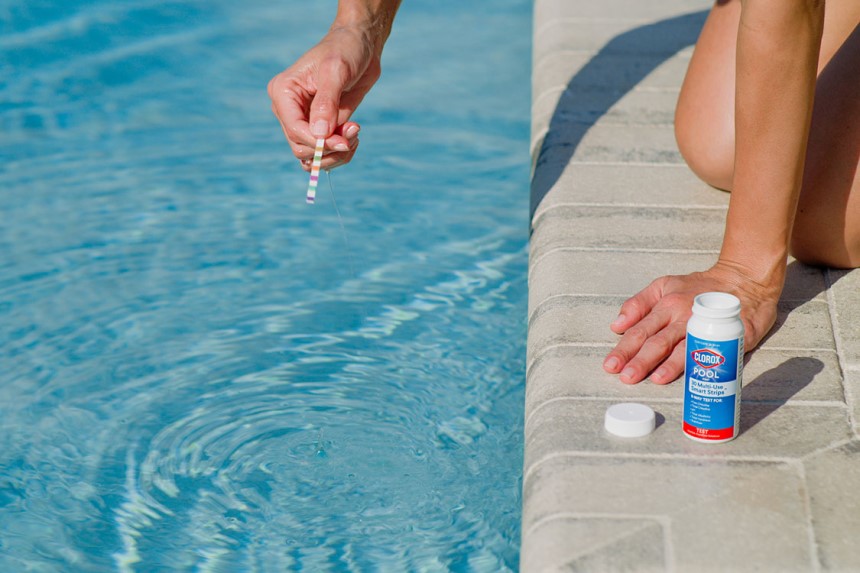
What is the best way to clean the pool before winterizing it?
The best way to clean a pool before closing it for winter is using a brush to clean the walls and the floor and a vacuum cleaner to remove all dirt and debris before following up with pool shock and an algaecide to kill bacteria and algae spores that could make the water gunky during the winter break.
The lowest you should drain your above the ground pool is 4 to 6 inches below the skimmer. Lower than 4 inches could damage your vinyl coating.
